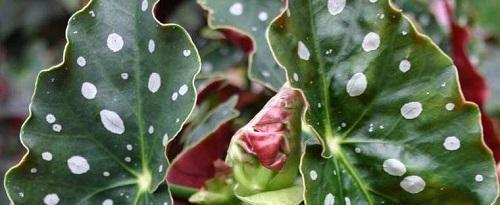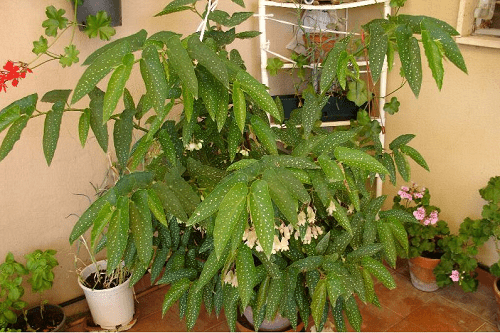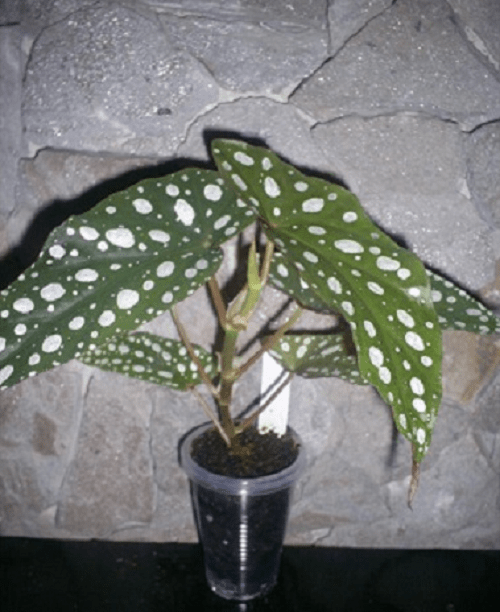Spotted begonia begonia maculata
Spotted begonia maculata is a bright representative of decorative deciduous plants, which in addition have beautiful inflorescences. This kind of begonia is not very convenient to grow on a windowsill, since it grows decently in height. A flower pot will decorate a closed balcony or draw attention to the bright corners of the house.
Description of the appearance of begonia

The flower grows in the form of a bush, has large (larger than a palm) leaves of a rich green color interspersed - hence the name of begonia. Young leaves are colored light green, but when they grow, the color darkens. The shape of the leaf is uneven, round-elongated, a bit like a heart. The reverse side is red. If you touch the sheet, you get the impression that it is wet or painted with oil paint.

This type of begonia blooms almost all year round. Large inflorescences hang in bunches (like grapes), and the flowers themselves are small - white or pale pink.
Growing spotted begonia

Begonias planted in early spring take root best. You need to choose an average flowerpot for a flower, spacious enough. The plant loves light soil, so they use mixed soil:
- leafy land;
- peat;
- turf;
- sand.
When planting begonias on the bottom of the flowerpot, be sure to lay pieces of foam or sprinkle expanded clay to create a drainage layer.
Conditions for keeping spotted begonia

The plant is light-loving, however, under the influence of direct sunlight, burn spots appear on the leaves. Therefore, it is better to choose a place for it with diffused lighting. If it is not possible to provide natural lighting (for example, the apartment is located on the north side of the house), the begonia must be additionally illuminated. With a lack of sun, the plant may stop blooming, and the leaves will lose their rich color.
Spotted begonia is very fond of water, so it needs to be watered often and well. At the same time, make sure that no water stagnates in the pan. With the onset of winter, watering is reduced - it is enough just to maintain moderate humidity, preventing the soil from completely drying out.
It is impossible to spray spotted begonia, otherwise the leaves will darken and the process of decay may begin.
Insofar as begonia spotted is afraid of low temperatures and drafts, it is grown only indoors. The comfortable temperature for keeping it in the summer is 25 degrees Celsius, and in winter - at least 17 degrees.
To stimulate development, the shrub is fed with special fertilizers for ornamental plants that bloom. Top dressing is best done starting in spring and ending in autumn no more than once (maximum two) times a month.
Pruning and breeding begonias

To stimulate the growth of side shoots and the formation of a beautiful bush, the top of the plant must be cut off. Since begonia blooms on young shoots, every 3-4 years it is rejuvenated - they carry out the maximum pruning.
If the fact of flowering is not so important, but you want to get large leaves, you can break the buds to redirect the power of the begonia to the growth of the leaves.
The cuttings and leaves remaining after the rejuvenation of begonia can be planted to obtain new plants. Begonia also reproduces by dividing the bush.